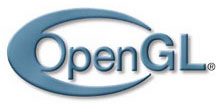This little tutorial can be seen as an add-on of the two following books:
GPU Gems #1 and ShaderX3. Both books deal with real time shaders
programming. More specifically, two articles, one in each book, are targeted:
- GPU Gems #1: Deformers - chap. 42
- ShaderX3: Deforming of Mesh Objects Using HLSL - chap. 1.3
Both books, which are part of my personal book-case, are simply fabulous and are, for us
poor developers looking for the graphics Graal, an incredible source of inspiration and
high-end techniques learning. However sometimes, some concepts tackled in these books are
missing some ready-to-use examples and it's the case for both previous chapters.
It turns out that both chapters cover the topic of polygonal mesh deformation (or
mesh-deformers). The aim of this article is just to provide ready-to-use source code
for both chapters and not to enlarge on the mesh-deformers theory. For that, check out these books.
The new thing in this tutorial compared with all previous ones is the use, in addition to the
Demoniak3D platform, of a little
3D engine especially developed for tutorials: the RaptorGL.

This engine, whose foundations are derived from the oZone3D engine,
is a static C++/OpenGL library (for the moment). It is shipped with all source codes in order to clearly show
how things really work. To sum up, each demo is released in two versions: the
Hyperion one and the RaptorGL one [grunting...].
The OpenGL Shading Language will be used to implement all real time shaders used by the demos.
